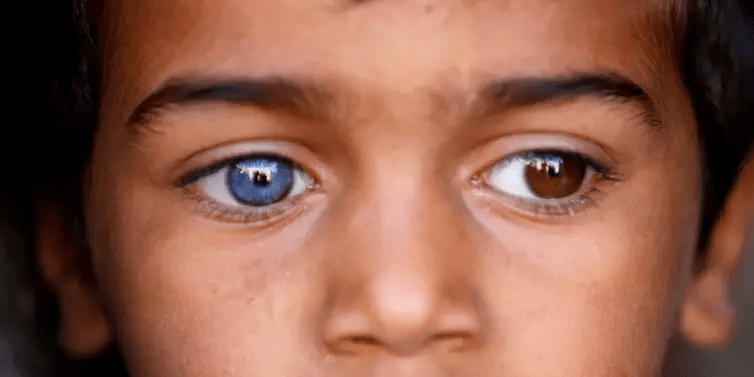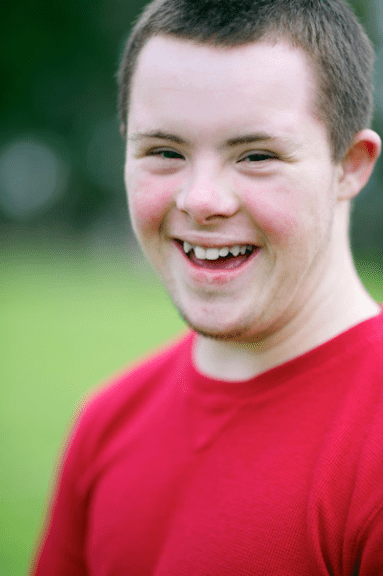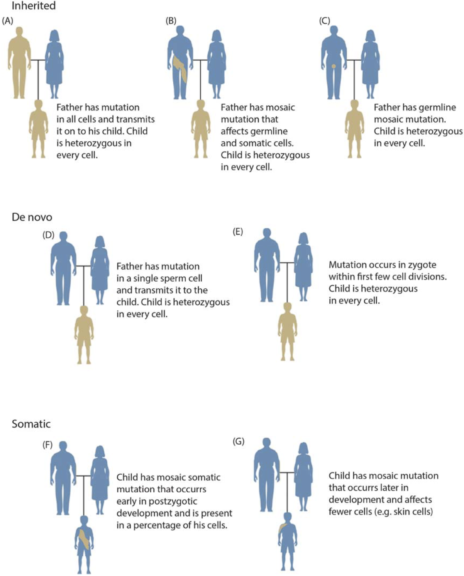
Mosaicism
n., plural: mosaicisms
[məʊˈzeɪɪˌsɪzəm]
Definition: a condition wherein there are more than one genetic line as the result of genetic mutation in an organism
Table of Contents
Cells often go through many divisions before they become a part of an organism’s genetic make-up. This leaves room for many genetic mutations including mosaicism. Non-Mendelian inheritance is a type of biological inheritance wherein the patterns of phenotypes do not accord with those expected in Mendelian laws on inheritance. It includes extranuclear inheritance, gene conversion, infectious heredity, genomic imprinting, mosaicism, and trinucleotide repeat disorders. What is mosaicism? To define mosaicism, we must refer to genetic mosaicism in biology.
Mosaicism Definition
Mosaicism, also known as genetic mosaicism, is a phenomenon in which a single multicellular creature has more than one genetic line as a result of genetic mutation. This suggests that a single fertilized egg resulted in many genetic lineages. Chimerism, which occurs when two or more genotypes appear in one individual in a similar way as mosaicism, is commonly mistaken for genetic mosaics. The two genotypes in chimerism, on the other hand, result from the fusing of more than one zygote in the early stages of embryonic development, rather than a mutation or chromosomal loss.
A human chimera baby will display chimerism human symptoms seen as a mosaic phenotype. They are typically skin mosaicism or pigment mosaicism:
- Hyperpigmentation (darkening of the skin) or hypopigmentation (lightening of the skin) (increased skin lightness)
- Two different-colored eyes
- Intersex genitals, or those that look sexually ambiguous (this sometimes results in infertility)
- In the body’s red blood cells, there are two or more sets of DNA.
- Autoimmune problems, such as those affecting the skin and neurological system

Many distinct methods can cause genetic mosaicism, including chromosomal nondisjunction, anaphase lag, and endoreplication. The most prevalent cause of mosaicism in the preimplantation embryo is anaphase lagging. Mosaicism can also occur as a result of a mutation in a single cell during development, in which case the mutation will only affect its daughter cells (and will be present only in certain adult cells). Because somatic mosaicism (somatic chromosomes) does not damage germ cells, it is not commonly inheritable.
Watch this vid about mosaicism.
Mosaicism is a condition wherein two or more cell populations with different genotypes exist in an organism, derived from a single zygote, as a result of experimental manipulation or due to faulty distribution of genetic material during mitosis. An example is a rare condition wherein some cells of the body of a patient have XX chromosomes while other cells have XY chromosomes. Another example is the 46/47 XY/XXY mosaic in which the individual contains two sets of cell populations: (1) a population of cells with the normal 46 number of chromosomes and XY genetic constitution, and (2) a cell population with 47 chromosomes and XXY genetic constitution.
History
Alfred Sturtevant examined mosaicism in the fly genus Drosophila in 1929. Muller demonstrated in 1930 that mosaicism in Drosophila is always associated with chromosomal rearrangements, and Schultz demonstrated in 1936 that these rearrangements were associated with heterochromatic inert regions in all cases studied, leading to several hypotheses about the nature of such mosaicism.
Mosaicism is thought to arise as a result of chromosomal segment breakage and loss, according to one theory. Curt Stern hypothesized in 1935 that somatic crossing caused structural alterations in the chromosomes, resulting in mutations or minor chromosomal rearrangements in somatic cells. Examples of somatic cells include muscle, blood, skin, and nerve cells. Inactive segments close to inert sections experience an increase in mutation frequency or minor chromosomal rearrangements as a result of the inert area.
Stern proved in the 1930s that genetic recombination, which occurs naturally in meiosis, may also occur in mitosis. When this happens, somatic (body) mosaics appear. There are two or more genetically different forms of tissue in these creatures. In his fundamental article on antigenic variation in 1956, CW Cotterman coined the term “soma mosaicism”.
Belgovskii suggested in 1944 that mosaicism could not account for some mosaic expressions resulting from chromosomal rearrangements including heterochromatic inactive areas. The resulting decrease in biochemical activity resulted in a genetic chimera, according to him.
What Causes Mosaicism?
What causes mosaicism in humans? Mosaicism is presumably present in most people on a minor, unnoticed level. It occurs when sperm fertilizes an egg, resulting in the formation of a zygote, which develops through a process of cell division. When cells divide and proliferate, they create an exact copy of their DNA, which is subsequently shared between the two cells that arise. However, when mosaicism is noticeable, it can produce many symptoms. What are some of the symptoms of mosaicism? Some symptoms seen physically can be:
- lower IQ
- a flattened face
- small ears
- shorter height
- eyes that tend to slant up
- on the iris of the eye, there are white spots
What is a mosaic embryo? Mosaic embryos are made up of a mix of defective and normal cells in varying amounts. The defects in aneuploid embryos are caused by sperm or eggs and occur before conception. However, in mosaic embryos, the defects emerge after fertilization during cell division and development of the embryo.
Genetic mosaicism examples that are noticeable in humans include:
- Mosaic Down syndrome
- Mosaic Klinefelter syndrome
- Mosaic Turner syndrome
- Mosaic neurofibromatosis

Types
There are many different types of mosaicism. The main ones are Germline and Somatic mosaicism. Other human mosaicism includes diploid triploid mosaic, pigmentary mosaic, chromosomal mosaic, fetal mosaic, cutaneous mosaic, maternal mosaic, and low-level mosaic or low-level mosaic embryo. This is also an animal mosaic.
Germline mosaicism
Germline mosaicism, also known as gonadal mosaicism, is a kind of mosaicism in which some gametes—such as sperm or oocytes—carry a mutation while the rest of the cells are normal. A mutation in an early stem cell that gave birth to all or part of the gametes is frequently the reason.
Somatic mosaicism
Somatic mosaicism occurs when the body’s somatic cells have many genotypes. Due to mitotic mistakes at the initial or later cleavages, various genotypes emerge from a single fertilized egg cell in the more typical mosaics. Mosaicism is common in the early and late phases of human life due to somatic mutation.
Retrotransposition of long interspersed nuclear element-1 (LINE-1 or L1) and Alu transposable elements causes somatic mosaics in embryogenesis. Due to lengthy, unmethylated sections in the genome, DNA from undifferentiated cell types may be more prone to mobile element invasion during early development.

Trisomies, Monosomies and Related Conditions
Trisomies are the most prevalent type of mosaicism discovered during prenatal diagnosis. Although most kinds of trisomy are caused by meiosis difficulties and impact all cells of the organism, there are also circumstances when trisomy only affects a subset of cells. A nondisjunction event in early mitosis, resulting in the loss of a chromosome from some trisomic cells, could be the cause. In general, this results in a milder phenotype than in people with the same illness who are not mosaic. There are different trisomy mosaicisms like trisomy 2 mosaicism and one can also be a trisomy 14 mosaic. The number is based on the chromosome location.
Intersex diseases can be produced by mosaicism, which occurs when some cells in the body have XX chromosomes and others have XY chromosomes (46, XX/XY). Humans receive 23 paternal and 23 maternal chromosomes each. A loss of one X chromosome early in embryonic development can result in sexual mosaics, or gynandromorphs, in the fruit fly Drosophila melanogaster, where a fly with two X chromosomes is a female and a fly with a single X chromosome is a sterile male. XY/X mosaic boys can also be caused by a deletion of the Y chromosome. Sometimes this is called the mosaic chromosome.
One of the milder types of Klinefelter syndrome, known as 46,XY/47,XXY mosaic, occurs when part of the patient’s cells have XY chromosomes while others have XXY chromosomes. The 46/47 annotation denotes that XY cells contain 46 total chromosomes, whereas XXY cells have 47 total chromosomes. There can also be a triple X chromosome (XXX).
Monosomies can also appear with mosaicism in some manner. Turner’s syndrome is caused by the only non-lethal complete monosomy that occurs in humans. Mosaicism is seen in around 30% of Turner’s syndrome patients, while full monosomy (45, X) is seen in roughly 50–60% of cases.
Mosaicism, on the other hand, does not have to be harmful. Revertant somatic mosaicism is a rare recombination event in which a mutant, harmful allele is spontaneously corrected. In revertant mosaicism, healthy tissue formed by mitotic recombination can outcompete the original, surrounding mutant cells in tissues that regenerate frequently, such as blood and epithelia. In ichthyosis with confetti, normal skin spots appear early in life and grow in number and size over time.
Gonosomal mosaicism
Gonosomal mosaicism is a kind of somatic mosaicism that arises early in the development of an organism and is seen in both germline and somatic cells. Because somatic mosaicism does not normally impact germ cells, it is not frequently inheritable. Because the changed allele is present in both somatic and germline cells, creatures with gonosomal mosaicism have the capacity to transmit the genetic change to prospective children.
Brain cell mosaicism
Copy number variation is a common kind of neuronal genetic mosaicism. Incorrect DNA damage repair and somatic recombination have been identified as possible origins of such variance.
Mitotic recombination
Mitotic recombination or somatic crossover is one fundamental process that can result in mosaic tissue. Curt Stern initially found it in Drosophila in 1936. The quantity of mosaic tissue depends on where the exchange occurs in the cell division tree. Mitotic recombination causes a phenotypic trait known as “twin spot” in Drosophila. However, the allelic state of the genes undergoing recombination is also a factor.
Only if the heterozygous genes are connected in repulsion, i.e. the trans phase, does a twin spot arise. The recombination must take place between the neighboring gene’s centromeres. In Drosophila, this results in yellow spots on the wild-type background. Bloom’s syndrome, which is caused by a mutation in the blm gene, is another example of mitotic recombination. The BLM protein that results is faulty. RecQ, a helicase, is faulty, allowing for an improper unwinding of DNA during replication, which is linked to the formation of this illness.
Use in Experimental Biology
When utilized in the often studied fruit fly, where specially chosen strains typically lose an X or a Y chromosome in one of the first embryonic cell divisions, genetic mosaics are a particularly potent tool. These mosaics may subsequently be used to study topics like courtship and female sexual attractiveness.
The introduction of a transgene inserted into the Drosophila genome has lately made the system significantly more versatile. The flip recombinase (or FLP) is a gene found in the yeast Saccharomyces cerevisiae that detects and causes recombination between “flip recombinase target” (FRT) sites, which are short DNA sequences.
Transgenically, FRT sites were introduced at the centromere of each chromosomal arm of D. melanogaster. The FLP gene can then be selectively activated, with the heat shock promoter or the GAL4/UAS system being popular choices. The clones that arise can be favorably or negatively identified.
Answer the quiz below to check what you have learned so far about mosaicisms.
Further Reading
References
- Chimerism: Definition, Symptoms, Testing, Diagnosis, and More. (2018a, November 29). Healthline. https://www.healthline.com/health/chimerism
- Chimerism: Definition, Symptoms, Testing, Diagnosis, and More. (2018b, November 29). Healthline. https://www.healthline.com/health/chimerism
- Chromosome Mosaicism. (n.d.). Yale Medicine. Retrieved April 24, 2022, from https://www.yalemedicine.org/conditions/mosaicism
- De, S. (2011). Somatic mosaicism in healthy human tissues. Trends in Genetics: TIG, 27(6), 217–223. https://doi.org/10.1016/j.tig.2011.03.002
- Fitzgerald, P. H., Donald, R. A., & Kirk, R. L. (1979). A true hermaphrodite dispermic chimera with 46,XX and 46,XY karyotypes. Clinical Genetics, 15(1), 89–96. https://doi.org/10.1111/j.1399-0004.1979.tb02032.x
- Forsberg, L., Gisselsson, D., & Dumanski, J. (2017). Mosaicism in health and disease—Clones picking up speed. Nature Reviews Genetics. https://doi.org/10.1038/nrg.2016.145
- Jacobs, K. B., Yeager, M., Zhou, W., Wacholder, S., Wang, Z., Rodriguez-Santiago, B., Hutchinson, A., Deng, X., Liu, C., Horner, M.-J., Cullen, M., Epstein, C. G., Burdett, L., Dean, M. C., Chatterjee, N., Sampson, J., Chung, C. C., Kovaks, J., Gapstur, S. M., … Chanock, S. J. (2012). Detectable clonal mosaicism and its relationship to aging and cancer. Nature Genetics, 44(6), 651–658. https://doi.org/10.1038/ng.2270
- Jongmans, M. C. J., Verwiel, E. T. P., Heijdra, Y., Vulliamy, T., Kamping, E. J., Hehir-Kwa, J. Y., Bongers, E. M. H. F., Pfundt, R., van Emst, L., van Leeuwen, F. N., van Gassen, K. L. I., Geurts van Kessel, A., Dokal, I., Hoogerbrugge, N., Ligtenberg, M. J. L., & Kuiper, R. P. (2012). Revertant somatic mosaicism by mitotic recombination in dyskeratosis congenita. American Journal of Human Genetics, 90(3), 426–433. https://doi.org/10.1016/j.ajhg.2012.01.004
- Lee, T., & Luo, L. (1999). Mosaic analysis with a repressible cell marker for studies of gene function in neuronal morphogenesis. Neuron, 22(3), 451–461. https://doi.org/10.1016/s0896-6273(00)80701-1
- Mosaicism: MedlinePlus Medical Encyclopedia. (n.d.). Retrieved April 24, 2022, from https://medlineplus.gov/ency/article/001317.htm
- What are Mosaic Embryos? – Genesis Fertility New York. (2021, September 20). GENESIS Fertility & Reproductive Medicine. https://www.genesisfertility.com/blog/what-are-mosaic-embryos/
©BiologyOnline.com. Content provided and moderated by Biology Online Editors.


